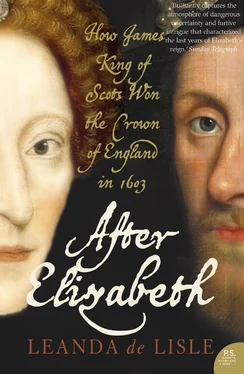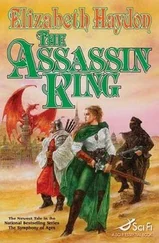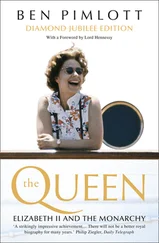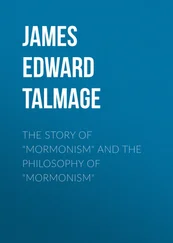In December 1591 Burghley began pursuing fresh attempts for a settlement with Spain. Burghley had always been the most enthusiastic advocate for peace and his chief rivals from the war party, Leicester and Walsingham, were now dead (Leicester had died in September 1588 and Walsingham in November 1591). New plans were made for Arbella’s marriage to Farnese and in order to underscore her importance in the line of succession she was invited back to Whitehall for the Christmas celebrations.
Harington recalled that Arbella had matured into an attractive young woman. He often admired her elegance of dress, ‘her virtuous disposition, her choice education, her rare skill in languages, her good judgement and sight in music’. 33 Elizabeth, however, began to fear that a party was building behind her and, according to Harington, Essex or his followers had made some ‘glancing speeches’ that suggested she had cause for concern. When the Duke of Parma died the following December, Elizabeth let the marriage plans drop. The friendship with Farnese was now of no use to her and she decided to put the eighteen-year-old Arbella back in her Derbyshire box. She would not be invited back to court during Elizabeth’s lifetime. While Arbella’s name continued to be mentioned in connection with the latest political gossip – a Catholic plot to kidnap her, a new husband who had been found for her – it was only as a bit part in a much bigger story.
In 1593, the first year of Arbella’s exile, the twenty-five-year-old Earl of Essex was appointed to the Privy Council. The average age of his fellow councillors was almost sixty, with the sclerotic Burghley holding a position of unrivalled authority. The only other young member was Burghley’s son, Robert Cecil, who had been appointed to the Privy Council in 1591 when he was twenty-eight. Just as Leicester had marked Essex out as his heir, so Burghley was grooming Cecil for his. A contemporary described Cecil as having a ‘full mind in an imperfect body’. 34 He was short – no more than five foot two – and hunchbacked. His face was almost feminine with large, vivid eyes that suggested his quick wit. Elizabeth would sometimes refer to Cecil as her ‘pygmy’ and sometimes as her ‘elf’. Others preferred the sobriquet ‘Robert the Devil’.
Unfailingly polite, watchful and measured, Cecil had been raised a courtier from infancy. He was therefore completely familiar with the complex network of human relations that bound people at court by blood, marriage, love, friendship, honour and dependency and he was precisely attuned to its mores. Here the normal rules of morality did not apply. Harington complained you ended up a fool at court if you didn’t start out a knave – but this did not trouble Cecil. As one discourse argued: ‘The courtier knows the secrets of the court, judges them not, but uses them for his particular advantage.’ 35 Essex did his best to push his young clients forward for high office, but as Elizabeth’s old Councillors died she preferred to leave their posts vacant than replace them, arguing that younger men were too inexperienced – and Burghley was no keener on finding new talent than the Queen. He surrounded himself with fifth-rate men who could pose no threat to him. In this stagnant pool corruption flourished. 36
Burghley’s servant John Clapham admitted that ‘purveyors and other officers of [the Queen’s] household, under pretence of her service, would oft-times for their own gain vex with many impositions the poorer sort of the inhabitants near the usual places of her residence’. And it wasn’t only the poor who suffered. ‘Certain it is,’ he recalled, ‘that some persons attending near about [the Queen] would now and then abuse her favour and make sale of it, by taking bribes for such suits as she bestowed freely.’ 37 There had always been bribery: since official salaries were very low it was expected, but the scale shocked court and country alike. Burghley claimed to be dismayed by it, but his son was well known for his predilection for taking large bribes and Burghley himself covered up or ignored financial scandals involving his appointees at the Treasury and the Court of Wards. Some cost the crown tens of thousands of pounds. 38 This mismanagement, combined with the problems of an outdated system of taxation, encouraged Elizabeth’s carefulness with money to become obsessive. As the Jacobean Bishop Godfrey Goodman later wrote, the ageing queen ‘was ever hard of access, and grew to be very covetous in her old days … the court was very much neglected, and in effect the people were weary of an old woman’s government’. 39
Harington’s tract complained that a few servants got everything and he had observed even then that ‘envy doth haunt many and breed jealousy’. 40 The old Catholic chivalric families, who had lost most to the ‘goose-quilled gents’ in the Cecilian elite, remained particularly resentful and they joined their Protestant peers in turning to Essex as the new leader of the nobility. Essex’s stepfather, Christopher Blount, was a Catholic, but his own religious allegiance was advertised by his having a Puritan chaplain. The term ‘Puritan’ had been coined as an insult, implying extremist views and the Puritans referred to themselves simply as the ‘hotter sort’ of Protestant or as ‘the Godly’. * Some had all the bullying fanaticism we associate with the term. There was a joke recorded in the winter of 1602 – 3 that a Puritan was ‘a man who loved God with all his soul and hated his neighbour with all his heart’. 41 But what attracted Essex was their integrity.
Even the Jesuit Robert Persons admitted: ‘The Puritan part at home in England is thought to be most vigorous of any other … that is to say most ardent, quick, bold, resolute, and to have a great part of the best captains and soldiers on their side.’ 42 Many Puritans hoped for political reforms that would sweep away corruption in public life, as well as for religious changes on Calvinist lines. Elizabeth had expected and even hoped that Essex and Cecil would hold differing views and attitudes. She had often used the arguments between Leicester and Burghley to give her the freedom to choose her own path. But Essex and Cecil became more than mere rivals in the Council. They dominated opposing factions with Cecil shoring up his father’s pre-eminence and his agenda of peace with Spain while Essex promoted the aggressive foreign policy previously advocated by Leicester.
Essex often tried to bully and badger Elizabeth into accepting his policies, but his view that she ‘could be brought to nothing except by a kind of necessity’ was not the best way to gain her trust. It became increasingly clear to Essex that Elizabeth was becoming more, rather than less, reliant on Burghley and the only hope for change would lie with her successor. The first determined attempt to browbeat the Queen into naming her heir had come in February 1593 when the Puritan MP Peter Wentworth petitioned Elizabeth to name her successor. Her reply was to put him in the Tower.
Harington recalled how from his cell Wentworth wrote ‘to tell [the Queen] that if she named not her heir in her life her body should lie unburied after her death’. 43 He remained in the Tower for four years until his death, all the while stubbornly refusing to keep silent on the issue of the succession – a promise that would have given him his liberty.
Meanwhile, beneath the surface of public life, opposing groups continued to make frantic efforts to secure the succession. The question, after all, was not merely one of who would inherit the throne but who would be the leading men in their government. In the autumn of 1593, Catholic exiles approached Ferdinando Stanley, Earl of Derby (a junior descendant of Henry VIII’s younger sister Mary Brandon). Derby was known to have Catholic sympathies and the group appeared to hope that he would accept the role of a candidate for the succession. Derby, however, took their letter to the Queen. The incident had all the hallmarks of an attempt by Robert Cecil to ‘waken’ a plot with agents provocateurs, a much-used method of gaining kudos with Elizabeth and destroying enemies, particularly Catholics. Derby’s action may have saved him from the scaffold, but within a few months he was dead anyway, having endured a violent sickness in which he produced vomit coloured ‘like soot or rusty iron’. 44 The description indicates bleeding in the stomach and the rumour was that he had been poisoned. * Some said the Jesuits had murdered Derby in revenge for his betrayal of them, others that the Cecils had arranged it in order to clear the path for Beauchamp. Elizabeth had become dangerously ill with a fever and the issue of the succession had taken on a new urgency.
Читать дальше












